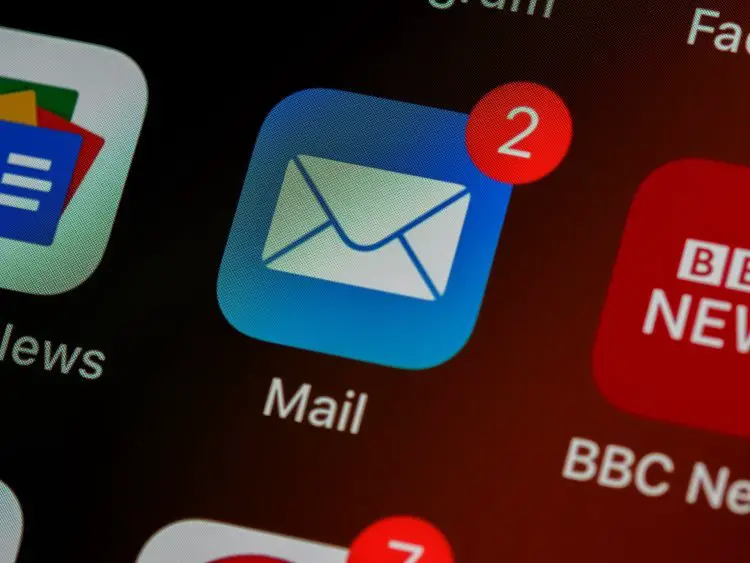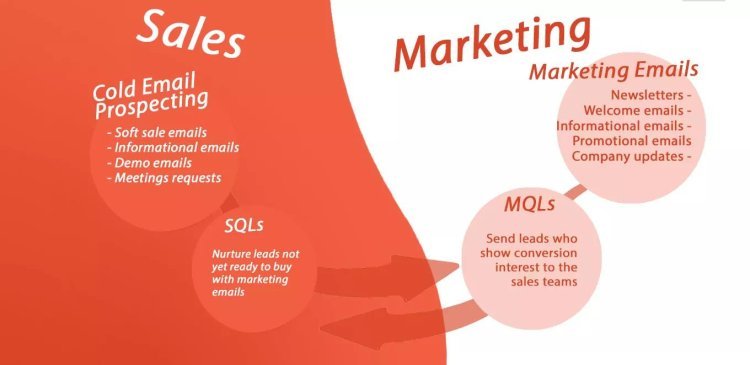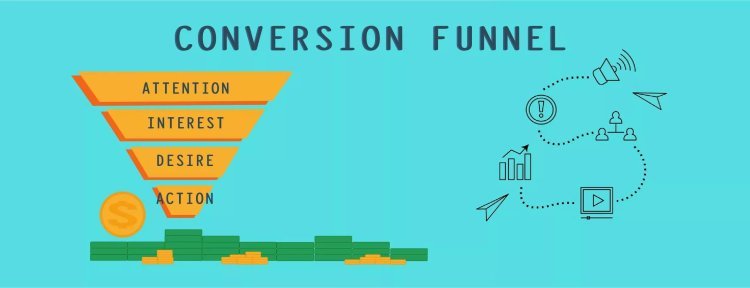The Benefits of Email Marketing for ANY Business!

The advantages of email marketing are extensive. When faced with limited resources, tight budgets, time constraints, and the imperative need for conversions, whom do you turn to? Or, to put it in more practical terms, whom do you reach out to? (Considering that phone calls have become less common these days.) The answer is simple: you utilize email.
Well, at least we hope you do, because in the realm of marketing, your business cannot afford to disregard the significance of email. In the current landscape of internet-oriented commerce and e-commerce, the benefits of email marketing are numerous, and neglecting this powerful tool could result in missed opportunities for increasing website traffic, targeting valuable audiences, reducing customer acquisition costs, and boosting overall revenue.
Still skeptical?
Continue reading as we're going to elucidate the merits of email marketing and how your business can make the most of them. We'll break this down into three sections:
- The Most Important Email Marketing Statistic You Should Be Aware Of
- What is Email Marketing? The Ultimate Overview
- 9 Advantages of Email Marketing for Your Business
Let’s get to it.
The number one email marketing statistic you need to know
On average, email generates $42 for every $1 spent.
That’s a 4,200% return on investment!
You know what else gives you a 4,200% ROI?
Nothing.
(Save for maybe your dog’s love.)
Email’s average return on ad spend (ROAS) is up from 38:1 in 2018. Which means email is growing more valuable. That’s great news considering over 4 billion people — half the world’s population — use email.
For comparison, in our look at how to drive more traffic to your site using Facebook, we found that marketing to Facebook’s roughly 2.8 billion users generates a ROAS of 8:1. (That’s one fifth as valuable as email.) Now don’t get us wrong, Facebook is an amazing platform for growth, but it’s no email. This is perhaps one of the single biggest advantages of email marketing: its upfront ROI is world renowned.
In terms of industry share, the travel industry has shown the greatest return (at $53 for every $1 spent). But the rest aren’t far behind, including entertainment (45:1), retail and eCommerce (45:1), and software and technology (40:1).
So, if anyone ever asks why you need email marketing, throw these ROAS email marketing statistics at their face.
What is email marketing? The only overview you’ll ever need

Email marketing involves utilizing email to promote products or services, engage with potential customers, and enhance customer loyalty. In a nutshell, email marketing can be described as such.
However, email marketing actually encompasses two main types of messaging:
-
Cold Emails (also known as Prospecting Emails): These are directed at individuals who may not be familiar with your brand or have not interacted with it yet. These individuals are typically referred to as prospects.
-
Warm Emails (also known as Marketing Emails): These are messages aimed at individuals who have already shown interest in your brand or engaged with it to some extent.
Cold Email
- Audience Target: Prospects
- Objective: Introduce your business. Convey authority. Engage the recipient. Enter them into your sales funnel.
- Benefits:
- Grows your brand’s reach
- Builds your contact lists
- Increases site traffic
- Poaches customers from competition
- Turns prospects into leads
- Tactic: Cold emails are written as short, simple, plain text messages. Like the kind of email you would send to a friend. They do not contain graphics or images. They contain a singular, soft call-to-action (CTA), such as “learn more” or “contact us.”
Warm emails target people who already engaged with your brand and opted in to receive additional emails from you. This can include either existing customers or leads. There are several different kinds of leads, including marketing qualified leads (MQL), sales accepted leads (SAL), and sales qualified leads (SQL).
Warm Email
- Audience Target: MQL, SAL, SQL and customers
- Objective: Convey authority. Engage the recipient. Convert the recipient. Build loyalty.
- Benefits:
- Builds a relationship with contacts
- Turns leads into customers
- Increases site traffic
- Improves conversions
- Generates repeat business
- Tactic: Warm emails are written as informative, visually engaging, HTML-based messages. (Though they can also be written as plain text messages as well.) They often use styling, graphics and images. They can contain either singular or multiple hard CTAs, such as “buy now” or “sign up”
Cold versus warm emailing is actually only one of several different ways to differentiate the two sides of email marketing.
Another is defining your messaging as inbound or outbound.
- Outbound Email Marketing: A business contacts a prospect first by sending messaging out to them unsolicited. Cold emailing is considering outbound marketing.
- Inbound Email Marketing: A prospect engages with a business first by entering into its sales funnel via one of the brands touchpoints. Warm emailing is considered inbound marketing.
And finally, email marketing can further be split up into two different categories according to department:
- Email Marketing for your sales department
- Email Marketing for your marketing department
This all might seem like semantics, but understanding the complete and full answer to ‘what is email marketing?’ can help better focus your strategy and determine which aspects to implement when. In other words, treating email marketing as a singular process of sending out emails en masse to a contact list is not enough. You need to think of it as a multi-faceted operation.
It’s best to visualize all this in terms of your sales funnel.

To optimize the effectiveness of your email marketing approach, it's essential to identify the specific segment within the sales funnel you intend to reach. This step will assist you in determining the appropriate email types for your strategy.
These email categories encompass:
- Prospecting Emails
- Welcome Emails
- Lead Nurturing Emails
- Newsletters
- Promotional Emails
- Seasonal Emails
- Transactional Emails
- Post-Purchase Emails
- Cart-Abandonment Emails
- Branding Emails
Email marketing can encompass the deployment of a series of automated emails as part of a drip campaign, such as welcome emails. Alternatively, it may involve sending a one-time message centered around a specific subject or event, like promotional emails.
In essence, this is a comprehensive explanation of email marketing. It also provides a condensed overview of how email marketing can be advantageous for your business. Now, let's delve into a more detailed examination of the benefits.
9 Advantages of email marketing for your business
1. Email Marketing Drives More Sales Than Social Media Marketing
The advantages of email marketing in contrast to alternative marketing avenues are substantial, as evidenced by our examination of ROAS mentioned earlier.
To support this point, 60% of consumers have attributed their purchases to email marketing, whereas only 12.5% have regarded a purchase button on social media as a motivating factor for buying.
2. Email Marketing is One of the Fastest Ways to Engage Customers
Approximately 22% of emails are viewed within the initial hour after being dispatched, which is remarkably swift. In just six hours, more than half of them have been read. If your communication requires timely delivery, email is a highly effective means to quickly disseminate the information.
3. Email Marketing is One of the Cheapest Ways to Engage Customers
When considering cost-effectiveness, email marketing stands out as a top choice. Unlike paid advertising, there are no costs associated with sending emails or having recipients click on them. In contrast to social media, there are no expenses for promoting your emails to reach a broader audience. Unlike SEO, you don't need to wait for your pages to climb the rankings to generate traffic, saving both time and money. Furthermore, there are no printing or mailing expenses, as you would encounter with print media.
While there is some upfront investment in designing email campaigns and developing contact lists, these costs are considerably more affordable when compared to other marketing methods.
4. People Love Getting Emails. A Lot of Emails.
Many clients express a significant concern when it comes to email marketing, primarily centered around the fear of bothering their customers. While bombarding inboxes with multiple emails per day is undoubtedly excessive, it's noteworthy how receptive your contacts might be.
Research indicates that nearly half of consumers actually appreciate receiving promotional emails on a weekly basis. Additional data underscores that sending 2-3 emails per month strikes the right balance. The key takeaway here is that your audience welcomes communication from you, and email marketing serves as an excellent avenue for fostering that connection.
5. Personalizing Email Marketing Campaigns is Easy
Customization stands out as the most crucial aspect in marketing. When individuals can connect with your content, their likelihood of engaging increases significantly. It's that straightforward. Thanks to the incorporation of merge fields and list segmentation, making your messages personalized in email marketing becomes effortless.
Typically, the email open rate hovers around 20%. However, when you personalize the subject line, for instance, by including a recipient's name using a merge field, that open rate surges by 50%. Similarly, segmentation results in a 50% boost in click-through rates. (Segmentation refers to sending distinct messages to different groups within your list.)
What's even better is that achieving this high degree of personalization can take just a few seconds and can sometimes be fully automated. Speaking of which...
6. Email Marketing Can Be Mostly Automated
The more you reduce the time spent on sending emails, the greater your financial resources become available for other strategies. Email marketing, in particular, stands out due to its remarkable efficiency and effectiveness in leveraging automation.
To illustrate this, automated emails are reported to generate a whopping 320% more revenue compared to non-automated ones. Whether it's automated welcome drip campaigns or abandoned cart emails, email outreach truly excels in captivating and re-engaging your audience, all without requiring any manual effort on your part.
7. Email Marketing Improves SEO
Email marketing provides a convenient way to boost your SEO efforts, and we might go as far as to say that it's one of the most underappreciated strategies for SEO, especially if you have a substantial contact list. As we've previously discussed, email is highly effective in distributing your content and driving qualified traffic to your website. An advantage of email marketing is that increased traffic can lead to improved SEO outcomes. Although email marketing doesn't directly impact the search rankings in Google or Bing algorithms, it can contribute to the growth of backlinks to your domain, which is a crucial factor in SEO rankings. Furthermore, high-quality email content can synergize with your on-site content, potentially resulting in improved keyword density, valuable Expertise, Authoritativeness, Trustworthiness (EAT) content, and higher Click-Through Rate (CTR) and Conversion Rate (CR) across various channels. Overall, natural link growth and enhanced brand visibility are essential components for achieving better SEO results.
8. Email Marketing is a Direct Line to Your Audience
One of the primary advantages of email marketing lies in its ability to establish direct communication with your entire audience. In other words, the majority of your contact lists are likely to receive your messages, provided you've taken the necessary precautions to establish your domain's credibility and avoid falling into spam filters. This is a significant contrast to platforms like Facebook, where only a meager 5.2% of your followers actually get to see your unpaid posts.
Building trust stands out as a critical element in the realm of sales, as trust serves as the foundation for loyalty, which in turn fuels growth. However, if you're unable to effectively reach your audience, all these potential gains can slip through your fingers. Thankfully, email marketing empowers you to foster a genuine connection with your customers, all on your own terms.
9. Email Provides Complete Control Over Your Marketing
The higher the number of individuals you can engage with, the more likely you are to achieve success. However, not all marketing avenues grant you the ability to manage this approach. In reality, on platforms such as social media, you lack ownership over your contact list and even your data. It could vanish at any given moment, as demonstrated by the fate of Google+.
Consider this scenario: If Facebook, Instagram, or Twitter were to suddenly vanish tomorrow, how many customers would you lose?
The good news is, you'll never have to concern yourself with this when it comes to email. This is because you always maintain complete control over your email contact lists.
Conclusion:
Email marketing stands out as an exceptionally efficient and high-conversion marketing approach. It empowers small businesses to expand their customer base and boost earnings with limited resources, while also enabling larger enterprises to capture leads and engage with their audience on a broader scale.
However, in a landscape flooded with various digital marketing choices, some might question whether email marketing truly justifies the investment when compared to other options. The resounding answer is a definite 'YES!'
The advantages of email marketing are self-evident. Yet, if you ever find yourself doubting its worth, keep this one statistic in mind...
What's Your Reaction?































